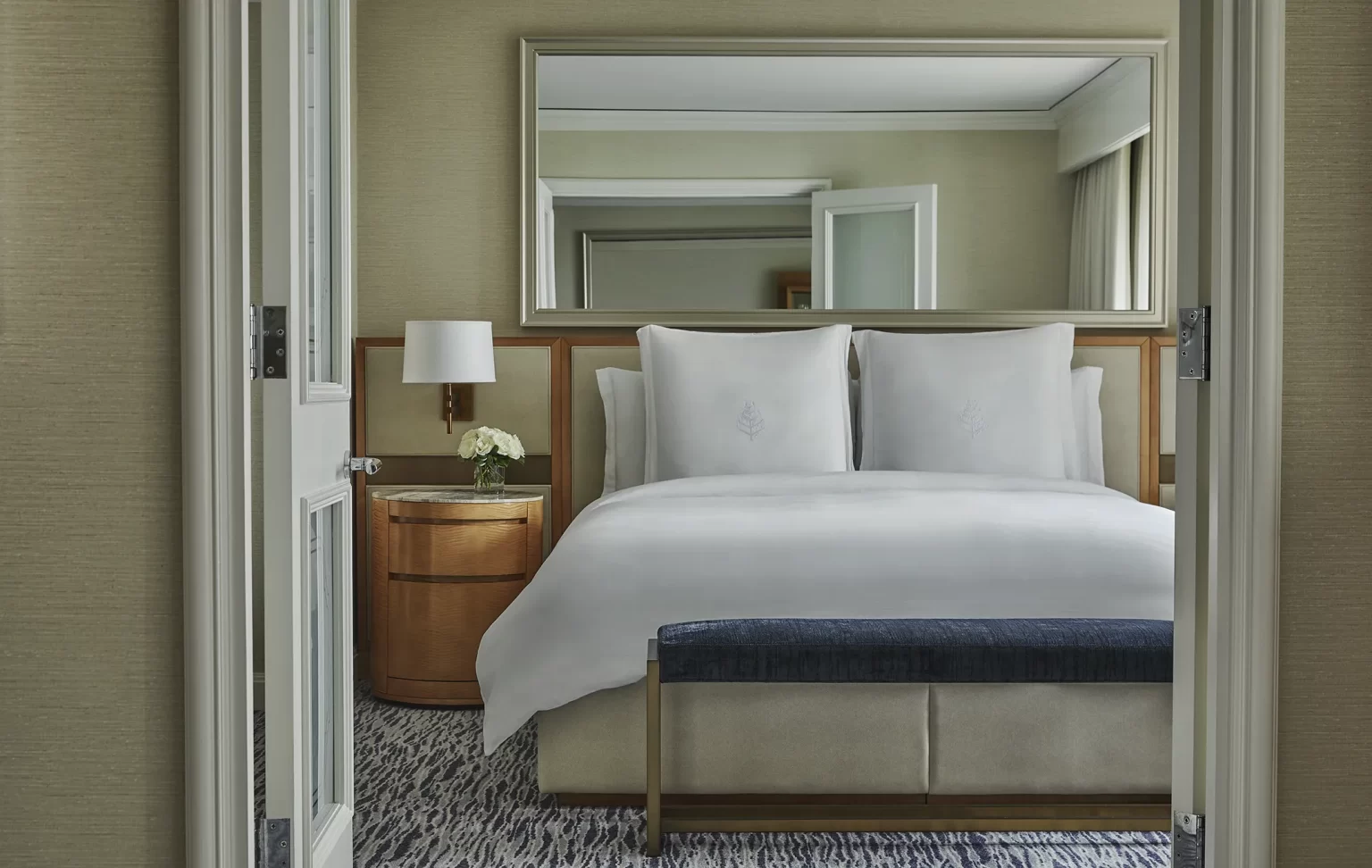
The Durability and Sustainability of Wood in Hospitality Furniture
The Durability and Sustainability of Wood in Hospitality Furniture
From the moment a guest steps into a hotel lobby or sits at a restaurant table, the furniture plays a pivotal role in shaping their experience. The aesthetic appeal, texture, and comfort speak to their senses and set the tone.
With its warmth and elegance, wood has been a mainstay in hotel furniture worldwide. It offers durability without sacrificing beauty, making it ideal for a high-traffic luxury setting.
Despite its appeal, the role of wood in hospitality furniture has been evolving. Sustainability is increasingly important, and while wood is natural and renewable, it is a slow-growing resource that has been overused.
Read on to learn more about wood’s durability and how it can be used sustainably to create the textured allure guests know and love.
Wood in Hospitality Furniture: Longevity, Durability, and Beauty
Wood is an integral part of luxury hotel furniture. One of its best advantages is its longevity. With proper care, wooden furniture can last for decades. While it can be costly up-front, its longevity makes it a cost-effective choice over the lifetime of a piece.
Furniture in hospitality settings has to maintain its elegance while enduring use, traffic, and frequent moves. Wood’s resistance to dents and scratches makes it a desirable choice, particularly when compared to metal or plastic furniture.
The wood elements of luxury hotel furniture are easy to maintain. Simple cleaning and occasional polishing are usually enough to keep it looking great. Minor scratches can be easily repaired.
Sustainability: Finding the Balance
Wood is a renewable resource. Trees have a significant positive impact on the environment, and forests can grow back. Wood has been deemed a less sustainable option in recent years because trees have not been replaced at the same rate they were cut down.
Responsibly Managed Forests
Wood from responsibly managed forests is an excellent choice for eco-conscious designers and owners. Commerce that encourages new trees to be planted benefits everyone.
Low Carbon Footprint: Solid Wood
Wood has a lower carbon footprint than materials like metal or plastic. Trees absorb carbon dioxide as they grow, so sustainably harvested wood helps to balance emissions produced during furniture manufacturing.
The type of wood used impacts the wood’s carbon footprint. Hardwoods, like oak and maple, take longer to grow and store more carbon dioxide during their lifetime. They also take longer to replenish.
The distance the wood travels between harvesting and manufacturing also has an impact, with shorter distances being more eco-friendly.
Biodegradable, Reusable, Recyclable
At the end of the furniture’s lifecycle, wood is biodegradable. Metal, plastic, and stone do not break down after use. Instead, they add to the landfill.
Solid wood can be reused, refinished, or repurposed. When a hotel is redecorated, solid wood furniture can be sold or donated for homes, businesses, or projects.
Wood Veneer in Hospitality Furniture
Wood veneer is often considered a sustainable alternative to solid wood. It provides solid wood’s natural warmth, grain, and beauty at a fraction of the cost.
Veneer consumes much less wood, which is particularly beneficial when using rare or exotic woods. It minimizes the environmental impact.
There are advantages and disadvantages to using wood veneer in hospitality furniture. It is an outstanding option but not always the only sustainable choice.
The Durability of Wood Veneer
The durability of wood veneer furniture is impacted by the core material used underneath it. High-quality core materials like MDF (Medium-Density Fiberboard) that offer a solid foundation enhance the furniture’s overall durability.
Many veneers have a durable finish, providing extra protection against scratches, dents, and moisture.
The Sustainability of Wood Veneer
Wood veneer is a more efficient use of wood. Each slice is thin, which means a single log can produce a large amount of veneer.
Veneer can also be shaped more creatively than solid wood, making it ideal for complex or curvy designs.
Low Carbon Footprint: Veneer
Since wood veneer uses less wood, it generally has a lower carbon footprint than solid wood. This is particularly true if sourced from the same places. For example, if both lumber came from sustainably managed forests and were transported the same distance.
The veneering method makes a difference. Traditional veneering methods use considerable energy and produce waste. However, newer techniques, such as rotary veneering, are more efficient.
Repair and Maintenance
Wood veneer furniture is relatively easy to maintain. While wood veneer cannot be refinished like solid wood can, it can often be replaced or repaired. This extends the life of the furniture and adds to the veneer’s cost-saving benefits.
Wood in Luxury Hotel Furniture Designs
The movement toward sustainability is here to stay. While wood may be used more thoughtfully than in the past, it remains a beautiful, durable, and versatile option. When sourced from sustainably managed forests, wood contributes to the beauty and health of the world.
If you want to incorporate wood or wood alternatives like bamboo into your next project, our expert team is here to help. We can assist you in finding the best quality, most sustainable, most cost-effective options on the market.
Connect with us today to find out more
